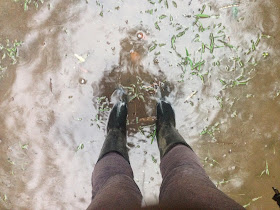When we Fisi campers traverse to Nairobi we feel basically
two emotions:
- Excitement to eat refrigerated goods/go out to
lunch
- Despair of the errands and general Nairobi
chores
 |
| Matt and Ashlei think about Nairobi |
Just like my comrades I experienced said feelings, however I
am mostly an optimist and thought that the deliciousness of chocolate
milkshakes and cheesy/meat meals would outweigh the bad.
In the course of 3 weeks (longer than normal Nairobi trip) I
learned a hearty lesson. There’s a lot of behind the scenes permitting and
licensing that allows such an extensive research project like this to function.
For example:
Everyone who’s out here researching must obtain a NACOSTI research permit.
This takes time and equates to several trips to downtown
Nairobi.
 |
| Benson and I eat a big breakfast, while looking up directions in the Nairobi A-Z book (maps of Nairobi streets.) |
We also must receive a Pupil's Pass to be here for a whole
year (gives us residency in Kenya.)
This involves meeting with a lovely official downtown and
gathering copious amounts of paperwork.
When we have to deal with GPS collar things, we spend almost
every day in Safaricom (our simcard provider and phone company) pestering and
explaining a complex situation to a different person each time.
We renew car insurance as well as vehicle inspections. If a car needs a service/repairs, we take her up to our trusty mechanic Ian. Got
to keep these cars up to speed with Kenyan regulations!
This time, KBY, the new truck, was transformed into KBY, the
new canvas cruiser.
 |
| Mara Ready |
We pick up new tents for very lucky future researchers.
 |
| Heidi admires the new tents and examines the ground textures using her bare feet. |
We restock on LN2, light fixtures, toilet paper, ketchup,
Nutella, and all other camp food necessities.
However, when not doing errands you are forced to entertain
yourself without hyenas:
I took up knitting!
 |
| Benson, looking dapper, in a newly knitted cap. |
You can also visit the David Sheldrick Elephant Sanctuary for orphaned elephants.
 |
| A young elephant is fed by his keeper. |
 |
| This guy apparently is still hungry. |
Or the Giraffe center. Careful, these guys apparently like
to kiss. French kiss.
 |
| Agathe gets a goodbye kiss from Ed, a Rothchild's Giraffe from the center. |
Eat pizza (on a daily basis. So much cheese!)
 |
| Artcaffe pizza looking greasy and tasty as always. |
Organize your room.
 |
| Clearly, an activity that I did. |
Watch hail pound the ground outside the cottage.
 |
| Safely tucked away in the cottage, we watch the hail storm! |
Or find chameleons wandering the Nairobi Streets. Dangerous
little guys.
 |
| The chameleon attempts to blend into Heidi's hand. |
Overall, Nairobi is full of adventures, but it’s always nice
to return to the Mara to see your favorite Fisi and fisi camp friends alike.
 |
| Fisi Camp United! |










































